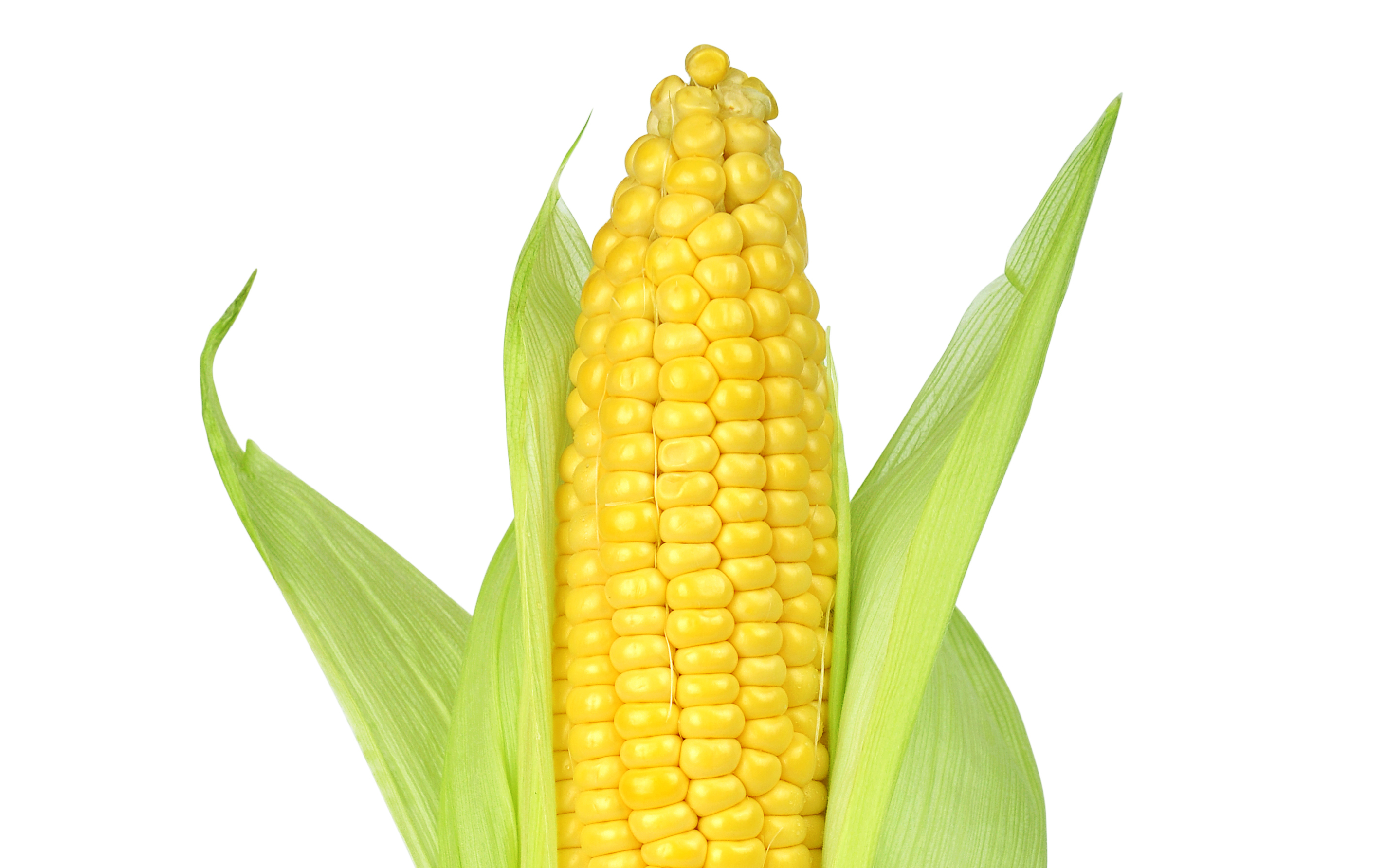Corn
Imported into Europe by the Genoese navigator Christopher Columbus, corn now accounts for a significant proportion of cultivated land and constitutes a major component of livestock diets. The meat from corn-fed animals is of exceptional quality. Humans consume corn in many different forms.
Origin and distribution of corn
Teosinte is a fodder plant which was grown in Mexico 6000 to 9000 years ago. After several centuries of crossbreeding, this plant evolved to present larger seeds and starch (a form of sugar) which was more easily digested compared to the original version. This was the birth of corn. In 1493, while serving for Spain, the Genoese navigator Christopher Columbus brought corn back to Europe from his first voyage to the Caribbean. Corn was grown from 1494, but was only moderately successful in Europe and it was not until it evolved through hybridisation that its yield increased. Today, while corn is a staple food in those developing countries which grow it, it is mainly used as animal fodder industrialised countries.
Cultivation and harvesting of corn
Corn was initially grown in countries with a subtropical or tropical climate, but the development of hybrid varieties soon enabled it to be planted practically anywhere in the world. It is generally grown in summer, although in some countries with a tropical climate, such as Senegal, a second harvest is possible in the dry season.
In Europe, corn is sown between April and May; it germinates and flowers in July and August. Corn kernels form after pollination and grow as they fill with sugar (starch), proteins and lipids, before becoming fully ripe in October. Corn is harvested when the kernels start to turn yellow and when a black dot is visible at the base of the kernel. For optimal storage conditions, corn requires a dry environment (between 9% and 15% maximum humidity).
It is recommended not to grow two successive corn crops on the same area of land, due to its high requirement for nitrogen. Ideally, it should be planted after a crop of pulses, potatoes or spelt which require little nitrogen. Corn also requires soil irrigated by large quantities of water.
Varieties and by-products
There are more than 200 different varieties of corn across the world. The plants vary from 40 cm to 6 m in height, and the ears measure 5 to 45 cm in length with different coloured kernels (yellow, blue or black). With its heavy seeds which naturally spread poorly, corn is the only cereal which depends on humans for its survival. Interesting fact: one hectare of corn produces around 4 times more oxygen than a hectare of forest.
The time of harvest depends on the intended use of the corn. Grain corn is harvested when its water content is between 25% and 35%. It is used for polenta and corn crisps, for example. For sweet corn, the water content varies between 70% and 72%. It is sold in tins, frozen or as fresh corn on the cob. Fodder corn (or silage) is harvested when the whole plant comprises 32% to 35% dry matter. For this type of harvest, the whole plant is crushed and stocked before being sold as animal fodder.
Other than its use as a foodstuff, corn is used to make packaging (biodegradable plastics) and in the pharmacy and cosmetics sector (in the manufacture of antibiotics, vitamins and vaccines). The ethanol derived from its fermentation and distillation is used to make alcoholic drinks such as gin, as well as in the production of biofuels, providing an alternative to petrol derived from oil.
Nutrition
Is sweet corn a carbohydrate or vegetable? With a carbohydrate content as high as potatoes (16%), and richer in proteins (3.3%) and lipids (1.2%) than fresh vegetables, sweet corn belongs to both categories.
Click here to add corn to your Potionarium
AGRIDEA, 2007. Fiche technique maïs [en ligne]. [Consulté le 16 mars 2016]. Disponible à l’adresse : http://www.bioactualites.ch
Société nationale d’Aménagement et d’Exploitations des terres du Delta du fleuve Sénégal et des vallées du fleuve Sénégal et de la Faleme | SAED, 2009. Fiche itinéraire technique du maïs [en ligne]. [Consulté le 16 mars 2016]. Disponible à l’adresse : http://www.saed.sn
MAIZ’EUROP’, 2016. Tout savoir sur le maïs [en ligne]. [Consulté le 17 mars 2016]. Disponible à l’adresse : http://www.agpm.com
BENZ, Bruce, 2001. La domestication du maïs : les métamorphoses du néolithique [en ligne]. La Recherche. Décembre 2001. N°348, p25. Disponible à l’adresse : http://www.larecherche.fr
GALLAIS, André, 2011. Le maïs, de la téosinte aux variétés hybrides [en ligne]. INRA, Les mots de l'agronomie. Histoire et critique. [Consulté le 30 mars 2016]. Disponible à l’adresse : http://tinyurl.com
Société Suisse de Nutrition | SSN, 1999. Pop-corn et fourrage [en ligne]. Tabula. Octobre 1999. N° 4, pp. 16-19. [Consulté le 18 mars 2016]. Disponible à l’adresse : http://www.sge-ssn.ch




